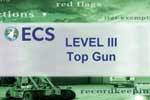Table of Content
1 INTRODUCTION
1.1 Study Assumptions
1.2 Scope of the Study
2 RESEARCH METHODOLOGY
3 EXECUTIVE SUMMARY
4 MARKET DYNAMICS
4.1 Market Overview
4.2 Market Drivers
4.3 Market Restraints
4.4 Porter’s Five Forces Analysis
4.4.1 Threat of New Entrants
4.4.2 Bargaining Power of Buyers/Consumers
4.4.3 Bargaining Power of Suppliers
4.4.4 Threat of Substitute Products
4.4.5 Intensity of Competitive Rivalry
5 MARKET SEGMENTATION
5.1 Armed Force
5.1.1 Air Force
5.1.1.1 Training and Simulation
5.1.1.2 Communication Systems
5.1.1.3 Weapons and Ammunitions
5.1.1.4 Manned and Unmanned Aerial Vehicles
5.1.2 Army
5.1.2.1 Personal Training and Protection
5.1.2.2 Communication Systems
5.1.2.3 Weapons and Ammunitions
5.1.2.4 Manned and Unmanned Aerial Vehicles
5.1.3 Navy
5.1.3.1 Weapons and Ammunitions
5.1.3.2 Sea-based Manned and Unmanned Vehicles
5.1.3.3 Communication Systems
6 COMPETITIVE LANDSCAPE
6.1 Company Profiles
6.1.1 Hindustan Aeronautics Limited (HAL)
6.1.2 Defense Research and Development Organisation (DRDO)
6.1.3 Ordance Factory Board (OFB)
6.1.4 Bharat Electronics Limited (BEL)
6.1.5 Goa Shipyard Limited (GSL)
6.1.6 Hinduja Group
6.1.7 Kalyani Group
6.1.8 Tata Sons Private Limited
6.1.9 Reliance Group
6.1.10 Mahindra & Mahindra Ltd.
6.1.11 Rafael Advanced Defense Systems Ltd.
6.1.12 Israel Aerospace Industries
6.1.13 Rostec
6.1.14 United Aircraft Corporation
6.1.15 The Boeing Company
7 MARKET OPPORTUNITIES AND FUTURE TRENDS



